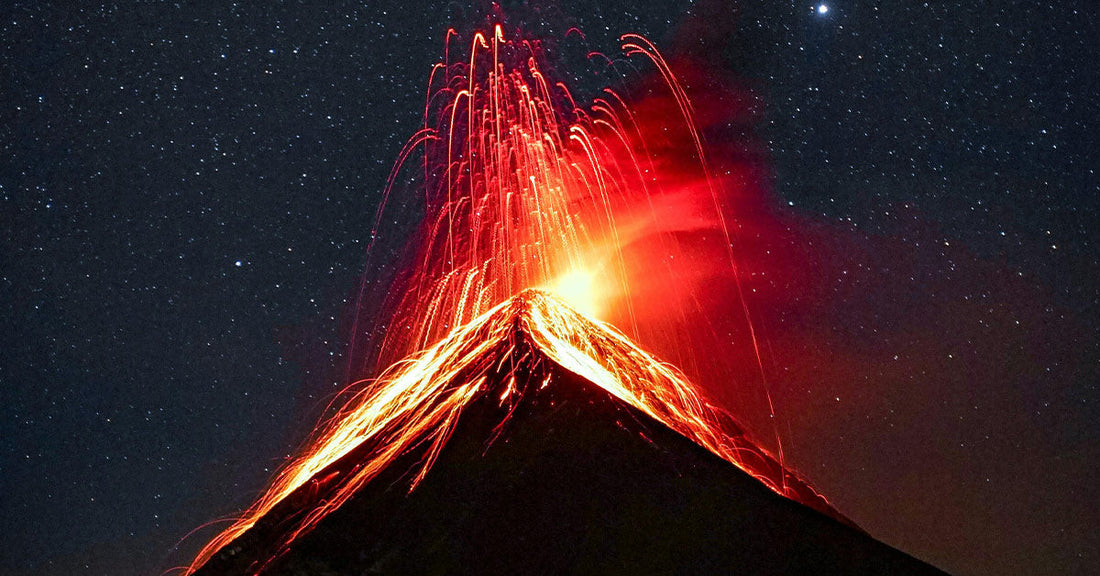7th Annual Holiday Toy & Treat Event! Bring Joy To a Shelter Pet
Underwater Volcano Near Oregon Set to Erupt and Ignite Ocean Life
Matthew Russell
Hundreds of miles off the Oregon coast, deep beneath the waves, the Earth is stirring. The Axial Seamount, a highly active submarine volcano, is inflating like a balloon. This underwater giant, positioned along the Juan de Fuca Ridge, could erupt by the end of the year.
Scientists monitoring the site have observed a steady buildup of magma, creating pressure that warps the seafloor and rattles the surrounding crust with daily earthquakes — often numbering in the hundreds, occasionally spiking to over 1,000 depending on tidal shifts, as Fox News reports.
Though the Axial Seamount lies nearly a mile underwater and 300 miles from the Oregon shoreline, its eruptions are far from irrelevant. The volcano is not a sleeping relic but a frequent player in Earth's geological orchestra. According to Los Angeles Times, with past eruptions in 1998, 2011, and 2015, its cycle of swelling and deflation has become a rich subject for researchers aiming to forecast eruptions with unprecedented accuracy.

Axial Seamount is inflating with magma and expected to erupt soon.
What Happens When It Blows?
Unlike Mount St. Helens or Krakatoa, the Axial Seamount doesn’t explode in fury. Its eruptions ooze. Lava flows out smoothly, covering the seabed in molten rock that hardens almost instantly when it hits cold seawater. According to CNN, previous eruptions created lava flows that extended up to 25 miles across the ocean floor. The surface crusts over quickly, but the interior stays molten, leaving lingering heat for months.
The first sign of an imminent eruption will likely be a sharp increase in earthquake activity. In 2015, nearly 10,000 small quakes were recorded in just one day. That kind of seismic burst hasn’t occurred yet, but scientists from the Ocean Observatories Initiative say the seafloor has already swelled beyond the inflation levels seen before the last eruption, the New York Post reports.

The volcano lies 300 miles off the Oregon coast, one mile underwater.
A Paradise Built From Fire
Beneath all the pressure and lava is something unexpected: life. Hydrothermal vents spewing mineral-rich fluid support entire ecosystems independent of sunlight. These vents form when seawater seeps into volcanic rock, heats to over 700°F, and shoots back out, packed with chemicals. As NPR explains, these become fuel for bacteria, which in turn sustain shrimp, tubeworms, and fish.
The vents vanish under lava during eruptions, but they return. And the life they support does too. Just three months after Axial’s 2015 eruption, microbial mats were already growing over the new rock, described by researchers as looking like snowfall, according to CNN.
Seamounts like Axial attract marine megafauna as well. Whales, sharks, and deep-sea fish flock to these biodiversity hotspots. As Oceana notes, these volcanoes can even foster new species, making them critical to the ocean’s evolutionary engine.

Axial Seamount erupts roughly every decade, with the last in 2015.
The Forecasting Experiment
Axial Seamount is among the most closely watched underwater volcanoes in the world. More than 140 instruments, including pressure sensors and seismometers, are tethered to it through the Regional Cabled Array — a sensor system funded by the National Science Foundation and operated by the University of Washington. As CNN confirms, it’s a unique opportunity to test predictive models for volcanic eruptions in a setting with no immediate threat to human life.
Volcanologist Bill Chadwick has been among those leading the charge to predict the next eruption. His method tracks the volcano’s inflation and seismicity. Sometimes, the signs are clear and linear, as before 2015. But in other years, like 2023, the signal wavers, the Los Angeles Times reports.
Still, the pattern has resumed. Since early 2024, the seafloor has been rising again at a steady rate. While no massive earthquake swarm has yet erupted, the clock may be ticking.
The Bigger Picture Below
Axial Seamount isn’t a threat to land. It won’t trigger tsunamis, nor will it impact coastal residents. But it is a rare glimpse into the ongoing construction of our planet. As Oceana explains, more than two-thirds of Earth's surface was forged by underwater eruptions like this one.
Even if the eruption happens tomorrow, the only evidence above might be a faint spike on a seismograph. But below, ecosystems will be reborn in fire, reshaped by lava, and fueled by minerals from the deep Earth. The world may not feel the eruption when it comes — but for the ocean, it will be a moment of creation.

